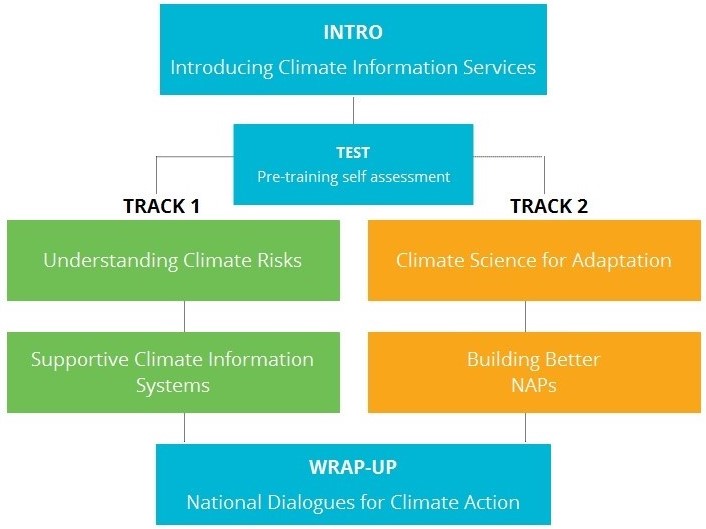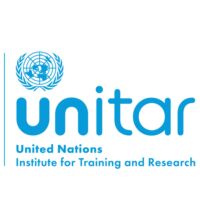At its 21st session, the UNFCCC Conference of Parties (COP-21) emphasized the importance of accelerated adaptation planning and implementation. As of August 2017, 152 Parties to the Convention out of 197 have submitted their first Nationally Determined Contributions (NDCs) to the UNFCCC, with 102 including an adaptation component, the majority being developing countries. The UNFCCC report released in October 2016 on progress in the process of formulating and implementing National Adaptation Plans (NAPs) indicates that many more countries, including over 80% of Least Developed Countries (LDCs), have embarked on developing a NAP.
The development and implementation of NAPs involve decisions related to climate risk management, which require reliable, relevant, usable and timely climate information.
Climate information used within the NAP process encompasses a wide range of information on past, present and future climate, and products which help improve the understanding of climate and its impacts on natural and human systems and support decisions to improve climate-related outcomes. Climate services involve the production, translation, transfer and use of climate knowledge and information for this purpose. Climate services, therefore, play a crucial role in the planning, financing and implementation of adaptation to climate change.
In this context and drawing on the WMO-led Global Framework for Climate Services (GFCS), WMO and UNITAR developed capacity building e-learning materials in support of a wider training package on “Integration Climate Risk Information into National Adaptation Planning”. The aim of this e-learning component is to contribute to capacity building that will bridge the information and communication gaps currently affecting the demand for climate information services and their supply.

The course is designed to respond the learning needs of both climate services providers (National Hydro-meteorological Services, research/academic and international organizations), and users (e.g. decision makers, private investors, non-governmental organizations, etc.), as well as of those working at the science-policy interface for outreach or communication purposes.
The training is modular and provides you with the liberty to choose and combine different thematic modules. There are two main themes or learning tracks available as illustrated in the figure below.
- Learning track 1 (green-colored): Producing climate information for NAPs
- Learning track 2 (yellow-colored): Using climate information for NAPs
Both learning tracks have in common the Intro and Wrap-up modules.
How to choose the learning track that best suits your profile and learning needs?
Once you complete the Intro module, you are recommended to undertake a test. Based on your answers to the five questions of the test you will be advised to follow either learning track 1 or 2, or both.
Each learning track culminates with a quiz that will assess the knowledge you will acquire. If you pass the quiz with a minimum mark of 70%, a certificate of completion will be issued to you. If you choose to follow both learning tracks you can receive two certificates by passing both quizzes.
Download SyllabusTarget Audience
The target audience for the e-learning course is broadly categorized in two groups: climate services users (e.g. decision makers, private investors, etc) and climate services providers (National Meteorological and Hydrological Services (NMHSs), research and international organizations, etc.)
- Decision-makers and politicians responsible to establish policy frameworks and regulations that define generation, collection, analysis and provision of climate information services;
- Technical experts and government officials in need of climate services to support decisions necessary for integrating climate risks into sectors (health, energy, water, agriculture and DRR, etc.);
- Private sector representatives interested in getting more involved in climate-resilient investment opportunities;
- NGOs, grass-root organizations and stakeholders groups looking for information and guidance on how to help vulnerable communities to cope with climate change risks and impacts;
- Academic and wider public stakeholders interested in accessing country-based information and best practices on climate information services.
Learning Objectives
By completing the course learners will be able to:
- Describe the importance of climate information in adaptation planning and decisionmaking.
- Identify technical resources for assessing climate risks.
- Explore the role of National Hydro-meteorological Services in the NAP process.
- Discuss how priority climate actions can be enhanced by climate scientific information
- Identify climate products and services that support NAPs.
- Discuss how to promote effective partnerships between climate information producers and users.










